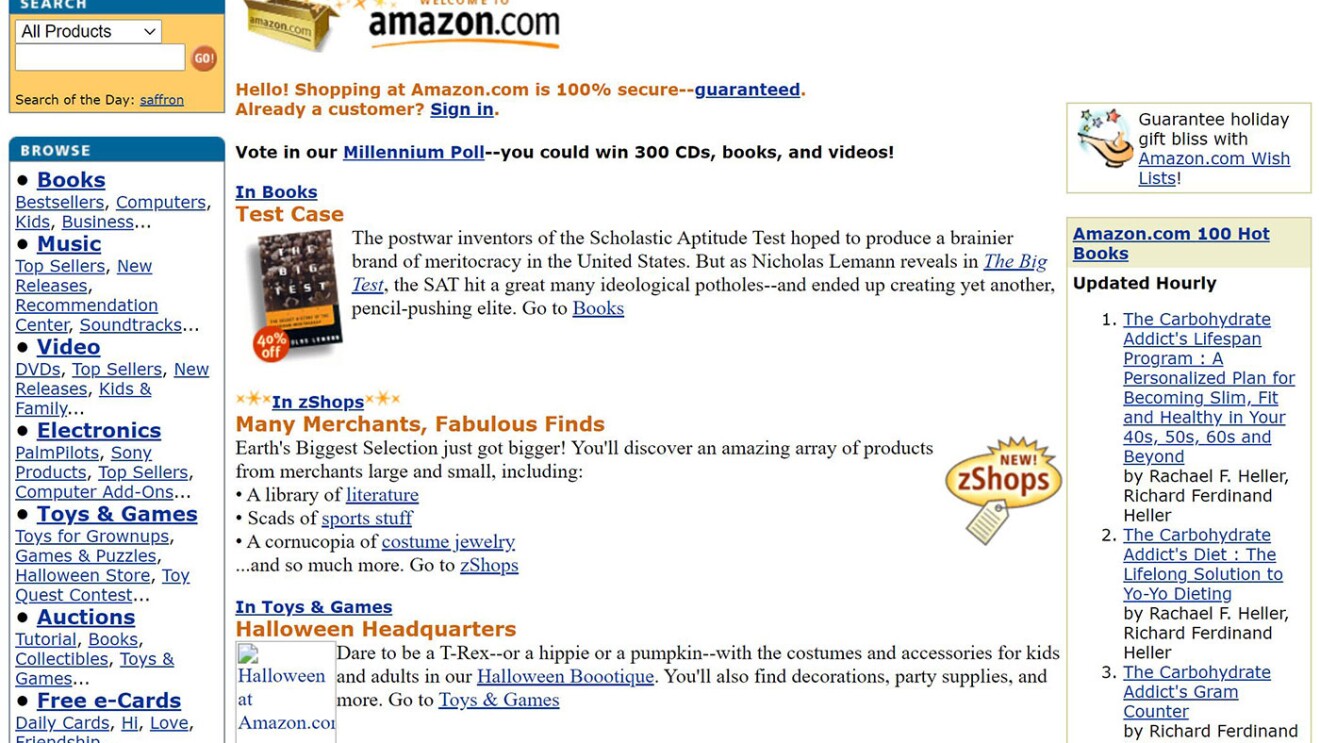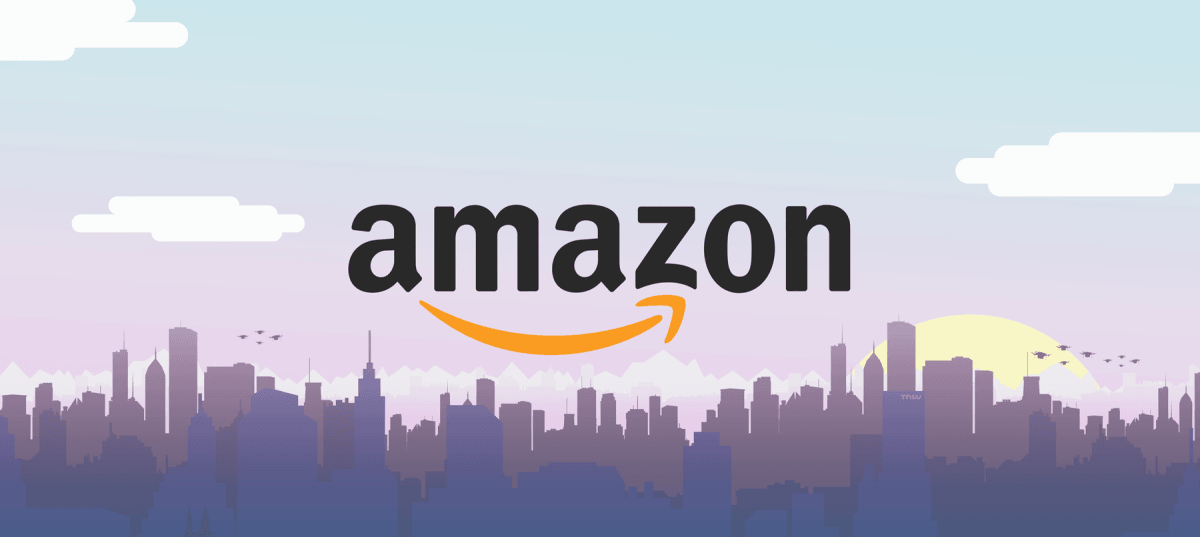Both have the same aisles you’ve come to expect, but the two stores don’t have all of the same products, and when they do, the prices aren’t always the same. So, to shop for everything on your list and get the most bang for your buck, you end up walking down the aisles of both stores.
If it sounds like a bad customer experience, you’re right. We know because we tried it. This is the story of how we went from two stores to one, better one.
The early years: Amazon the retailer
Many people know that the Amazon store started selling books. Like most other retailers at the time, Amazon sold those books itself. Most people also know that today, the Amazon store sells much more than books. What you may not know is that almost 60% of the sales of physical products sold in the Amazon store (by value) are now made by independent sellers—entrepreneurs and other mostly small- and medium-sized businesses—not Amazon.
How did we get from zero to 60? And why did we do it? The answer lies in our mission: To be Earth’s most customer-centric company.
Early on, Amazon followed a well-worn retail path: we purchased products in bulk from brands and distributors, and then we sold them directly to customers in our store. By taking care of customers and offering great deals, we found success. That time-tested retail model works well for many retailers. The retailer can make certain it has the selection of products that customers want, confirm it has sufficient stock so that the products are available, and ensure it has competitive prices. But this model has its limitations: a retailer can only purchase, hold in inventory, and offer so many products. These limitations imposed practical limits on our ability to offer customers the broad selection we believed would make our customers even happier.
The separate store years: Auctions and zShops
To provide customers with greater selection, we began to invite independent, third-party sellers into our store in early 1999 with the launch of Auctions. Customers could reach this virtual auction house through a link on our home page to bid on an array of products, largely offered by small- and medium-sized businesses.
It failed. Not many customers took the extra step to click and visit Auctions. Later that year we tried a different approach called zShops. Unlike Auctions, in this new store, independent sellers set a fixed price for their products. But this second attempt didn’t fare much better. Customers still weren’t willing to click through to a separate store from the home page.

Why Auctions and zShops failed
While independent sellers who signed up for Auctions and zShops helped us expand product selection for customers, these storefronts were separate from our flagship store where customers shopped for products sold directly by Amazon. This made finding all available products and offers for specific items more difficult by requiring customers to “walk the aisles” of two separate storefronts, rather than shop at a single, combined store.
A single store
Auctions and zShops failed, but we didn’t want to give up on the additional selection and good prices we were convinced independent sellers could offer customers. So, we changed our approach. We invited independent sellers to sell in the Amazon flagship store, alongside products sold by Amazon. And we took it a step further. If more than one seller—whether it was Amazon or an independent seller—offered the same product, those offers would be listed on the same product page. This single product page included key information about the product and the available offers to choose from (such as the sellers, offer prices, and delivery options). By listing all offers together, customers could easily compare and select from all of the available options.
This new approach felt risky at the time, and we had a lot of debate about it. We knew it would require a large investment, both to help independent sellers succeed and to ensure that our flagship store would continue to meet the high standard we set for our customers’ shopping experience. But it worked.
Savings for customers, a boost for small businesses
The expanded selection and choice provided by independent sellers made a better shopping experience for customers. Having all the products in a single set of “aisles” allowed customers to quickly and easily compare products and prices, while placing all sellers’ offers for a product on a single product page helped keep prices low for customers. Customers saved time, just walking the aisle once, and saved money—and kept coming back to the Amazon store as a result. Over the years, we’ve continued to improve single-product pages, adding new features such as customer product questions and answers, and enhanced content such as videos.
Our original belief that a single store approach would require a large investment turned out to be true. We’ve invested a lot over the years to build the right customer experience and tools and services for independent sellers, who are now critical to our success. In 2019 alone, we invested more than $15 billion and created over 225 tools to support their success. As a result, American small- and medium-sized businesses selling in Amazon’s stores had a record-breaking year, with more than 15,000 businesses surpassing $1 million in sales and nearly 25,000 surpassing $500,000 in sales in 2019. Research from IDC has found that selling in Amazon’s store is supercharging growth for U.S. small- and medium-sized businesses. Small businesses that sell in Amazon’s stores are 2.5 times more likely (46% versus 18%) to have seen revenue growth of 25% or more in the past year than those not selling in our stores. Today, these independent sellers account for almost 60% of the value of all physical products sold in our store, and their sales have grown twice as fast as our own retail sales since we invited them into our flagship store.
At Amazon, we take being Earth’s most customer-centric company seriously. For us, this means low prices, outstanding service, and the widest possible selection. And that’s why we are willing to experiment and take risks—and sometimes fail—when we see an opportunity to better serve customers, like we did when we first invited independent sellers into our flagship store. That’s one decision we’re glad we made. Customers have more choices, and great prices, while independent sellers have access to Amazon customers. It’s no surprise that others have followed our approach: one store has definitely been better than two.






